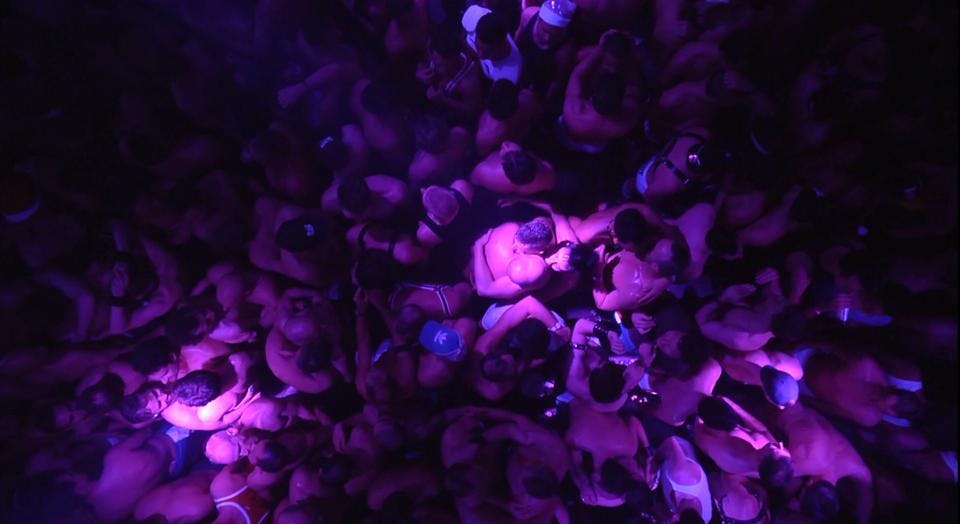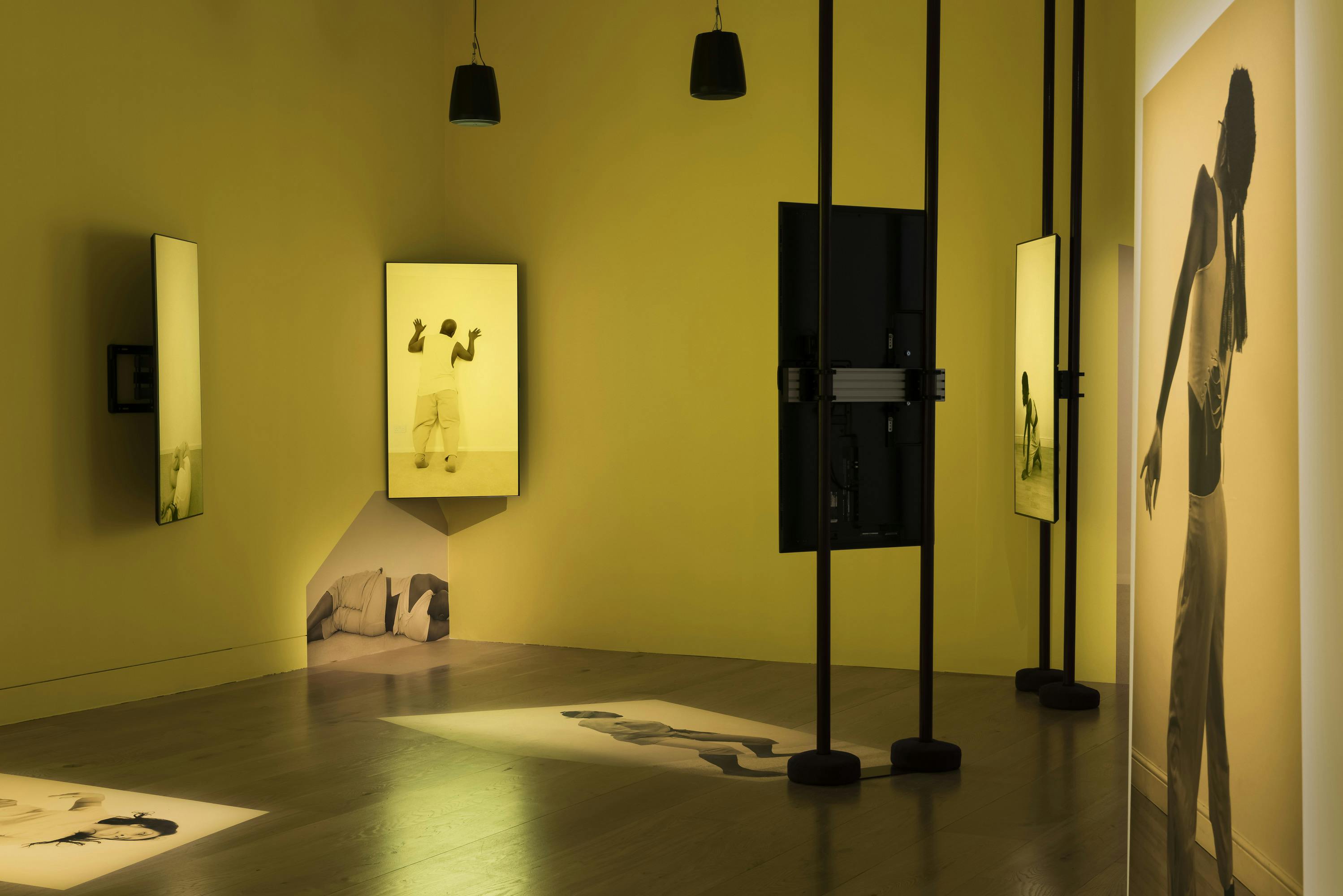Bodies in motion - dance and resistance
26 mars–15 maj 2022

Most of us have experienced moments of complete presence surrounded by other sweaty bodies, the energy is palpable in the familiar, synchronized movements on an ecstatic dance floor. A common strong bass, a common body.
Everything is revealed in the movement — a moment where the present and everything we have thought or felt seeps out. For those who are attentive, you can witness our humanity in our dance. Invited artists explore the dance floor as a site of resistance to an oppressive world. How can dance function both as an expression of collective joy and as a response to societal anxiety? The exhibition is curated by Konsthall C's artistic director Ulrika Flink.
Bogomir Doringer's project "I Dance Alone" observes the club's dance floor from a bird's eye view. He examines the dance floor as a mirror of social and political changes through collective and individual dynamics on the dance floor. Doringer has established a new definition "Dance of Urgency", this is a form of dance that arises in times of personal and collective crises — a kind of dance that aims to strengthen individuals and collectives.
Harold Offeh's video installation Joy Inside Our Tears examines the relationship between trauma, social dance and collective joy. However, collective dance does not always necessarily signal joy but can also be a sign of stress inflamed by societal anxiety, anger or sadness associated with a time filled with unrest. The work deals with the complex relationship between trauma and public manifestations of dance.
Mogli Saura's radical practice takes many different forms. She is an artist, singer, writer, permaculturist and yoga instructor. Mogli Saura's Chaos Butoh performance is conceptualized as a way of life, a movement that embraces life as a whole. If Kaos Butoh stands for ritual performance in the public space, an exploration of the body's relationship to the world, Mogil Saura now turns her gaze to her own family. Driven by a radical desire to condense the crossing of boundaries between art and life, the artist, after years of conversation, managed to convince her mother to share thoughts and memories through collective performative hair removal sessions.
Konsthall C invited Isabel Löfgren who is a Swedish-Brazilian artist and researcher who has been allied with Brazilian Casa Chama since the end of 2018. Society calls them "trans", "transsexuals" and "transvestites", but they prefer the term transvestigender. Casa Chama was founded in 2018 to strengthen and protect the lives and creations of transvestitgendered artists. It is one of several grassroots organizations that have mobilized against President Jair Bolsonaro's transphobic policies and efforts of the far-right to strip the arts sector of resources. Casa Chama emerged as a resistance movement that criticized the marginalization of transvestigendered artists in the art world. Mogli Saura is one of many artists that Casa Chama works with through their residencies and who participated in the Chama Festival for music and performance. The festival scheduled for 2022 is threatened, so a fundraiser is organized during the exhibition to raise money for the event to enable dance floors to remain open this year.
Midnight Frontier is a documentary about an example of queer resistance movements who have utilised dance in their work. The film is produced and directed by Peter van Langen and follows activists on the frontline of LGBTQI+ rights in Georgia. They recount their experiences during the International Day Against Homophobia when they were attacked by thousands of homophobes led by the Georgian Orthodox Church. Club Bassiani, and their queer event Horoom Nights, is a locus in the fight against homophobic violence. For them, the nightlife in Georgia is not an escape, but a space to gather the strength needed to carry on the fight. Together, it creates a space that unites friends and enemies through dance and extends beyond the clubs walls.
